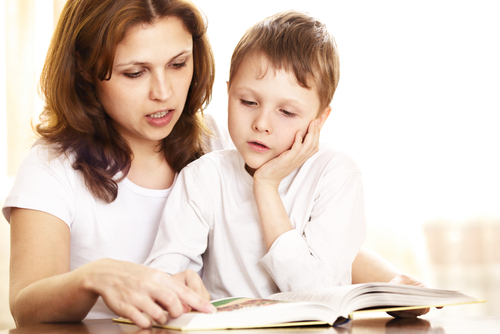People seeking quick access and portability prefer ebooks, according to a national study on ereading released today by the Pew Internet & American Life Project. But when it comes to reading to children, print wins out—big time.
Overall, there’s further, more detailed evidence toward an expected scenario—ebooks are on the rise. One fifth of American adults (21 percent) report that they’ve read an ebook in the past year. And the growing availability of digital content is prompting some to read more than in the past, finds the study, which was funded by the Bill & Melinda Gates Foundation.
 But by a huge margin, 81 percent to 9 percent, respondents who’ve read in both kinds of book formats in the past year say print books are better for reading with a child. “This is a consistent judgment throughout different demographic and tech-owning groups,” reads the report, although tablet owners (14 percent) are more likely than those who don’t own tablets (7 percent) to say they prefer ebooks for this situation.
But by a huge margin, 81 percent to 9 percent, respondents who’ve read in both kinds of book formats in the past year say print books are better for reading with a child. “This is a consistent judgment throughout different demographic and tech-owning groups,” reads the report, although tablet owners (14 percent) are more likely than those who don’t own tablets (7 percent) to say they prefer ebooks for this situation.
Jennifer Perry, VP, Worldwide Publishing, Sesame Workshop, believes more research is needed. “We know that an increasing part of our audience is interacting on tablets, e-readers, and smart phones, so our aim in conducting research on apps and ebooks is to learn how best to use new technologies to make the most meaningful reading experience for these families,” she says.
“Some parents may prefer reading print books to their children, others may prefer ebooks. As tablet penetration grows, we expect that many families will do both and will make those format decisions based on personal preference and circumstances.” For example, some adults may choose ebooks during travel, but not for bedtime.
“We have not yet fully explored how a child’s actual learning outcomes may differ when it comes to reading a print book vs. a digital book,” adds Perry.
Photo by Shutterstock Images.
More of our coverage on the Pew Study, “The Rise of E-Reading”: “Library Users Like Ereading, But Ebook Readers Want to Buy Books, Pew Study Finds.”



I would like to see more research. Many schools are buying ipods, ipads, and more technology while they’re limiting access to books and closing libraries. I’d love to see an Action Research Study that compares two elementary schools with similar demographics–one of the schools heavy in print with well-staffed library; versus a school heavy in technology. I am guessing the school with the great book collection will have higher reading scores.
Well, of course parents would say that! They have no choice…yet. When you look at what is available for children to read, most of it is badly translated and repurposed Chinese school propaganda from a period most would want to forget, or unedited mom and pop tales that their kids loved and so have written down and had illustrated by the nice lady down the street. There’s nothing wrong with that, but I think you are talking about something that doesn’t really exist yet.
Most ebooks do not work for children’s books. The Kindle is black and white and murders illustrations position. The iPad has really got it right now with iBooks.
I’m working on putting my backlist of children’s books onto iPad. The first is called the Ginger Ninja and I hope to get Millie and Bombassa up today.
Sure it’s a reprint, but I’m adding extras, including video tutorials to show how the characters are drawn and video storytelling readings too. I firmly believe that readers should be just that. No singing and dancing text that speaks to you. Kids will never learn to read with that – that’s called watching TV!
I know there are many more like me, experienced authors and illustrators who are working on this. Come back in three years time, (When Amazon will give kindle fires away for free) and I think you will find a different story.
It’s only the oldies that love print books. Kids couldn’t care less – they don’t come with all that paper binding baggage:)
This was the subject of my doctorate proposal, so I’m very curious to see the results of long-term studies. I think to be accurate, reports need to include the children’s ages and reading levels along with their preferences.
I have one child who loves to read on a nook because she can carry the entire library with her and doesn’t have to worry about running out of books. She is a tween and reads far above her grade level. I have another younger child who, while a capable reader, still prefers to be read to and likes “real” books. She is drawn in by unusual covers, textures, and pop-up illustrations, but I imagine in a few years she will move beyond that. Hooray for variety!
I’m from Asia pacific and here i see kids are getting totally different i know one of my cousin’s daughter who like to read comics in iPhone than a real printed book, and i also see the primary schools getting virtual with electronic resource centers, where kids can access computers and all the comics and books from computer data base.